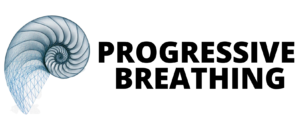The Vestibular System & Nasal Breathing: Enhancing Balance, Coordination, and Well-Being
The vestibular system is a lesser-known but crucial part of our sensory framework. Located within the inner ear, it plays a key role in maintaining balance, spatial orientation, and coordination by sending information about movement and head position to the brain. This system’s health and functionality are essential for stability, clear vision, and overall well-being. Interestingly, nasal breathing practices—a tool often used to manage stress and enhance relaxation—can positively impact vestibular health. Here’s a closer look at how nasal breathing may benefit the vestibular system.
Understanding the Vestibular System
The vestibular system comprises three main components:
- Semicircular Canals: These three loops detect rotational movements.
- Otolith Organs (Utricle and Saccule): These structures detect linear movements and gravitational forces.
- Vestibular Nerve: This nerve transmits signals from the inner ear to the brain, helping us make sense of our position in space.
The vestibular system constantly communicates with the brain, working with the visual and proprioceptive (body position) systems to coordinate balance and movement. When this system isn’t functioning properly, it can lead to symptoms like dizziness, vertigo, balance issues, and even anxiety.
The Power of Nasal Breathing in Supporting the Vestibular System
Breathing through the nose, as opposed to the mouth, has several physiological benefits that support the vestibular system:
- Regulates Carbon Dioxide and Oxygen Levels: Nasal breathing allows the body to retain more carbon dioxide (CO₂), which is essential for balancing oxygen delivery to tissues. This balance helps maintain steady blood flow to the brain and inner ear, areas critical for the vestibular system’s proper function. The calming effect of nasal breathing also prevents hyperventilation, which can destabilize blood gases and lead to symptoms like lightheadedness or dizziness that challenge the vestibular system.
- Enhances Autonomic Nervous System (ANS) Balance: The ANS regulates involuntary body functions, including blood pressure, heart rate, and respiratory rate. Through slow, controlled nasal breathing, we can stimulate the vagus nerve, which helps bring the body back to a state of parasympathetic (rest and digest) balance. This calming effect reduces stress-induced vestibular disturbances, supporting stable head and body positioning.
- Improves Head and Neck Posture: Nasal breathing encourages proper posture, which influences vestibular stability. Unlike mouth breathing, which often leads to a forward-head posture, nasal breathing keeps the head more aligned over the spine. This alignment benefits the neck muscles, joints, and the vestibular system, which all work together to ensure balance and clear, steady vision.
- Stimulates the Diaphragm and Enhances Lymphatic Drainage: Nasal breathing promotes deep diaphragmatic breaths, which encourage a gentle, rhythmic movement through the chest cavity, indirectly assisting lymphatic drainage around the head and neck. This drainage supports the fluid equilibrium in the inner ear, crucial for vestibular function.
How to Practice Nasal Breathing for Vestibular Health
Incorporating specific nasal breathing exercises can improve vestibular system health over time. Here are some effective techniques:
1. Diaphragmatic Nasal Breathing
- Sit comfortably, close your eyes, and take a slow, deep breath through your nose, focusing on expanding your abdomen.
- Exhale gently through your nose, feeling your abdomen return to its normal position.
- Repeat for 5–10 minutes, gradually increasing the time as your comfort level improves.
This practice engages the diaphragm, stimulates the vagus nerve, and improves blood flow to the vestibular system.
2. Box Breathing
- Breathe in through your nose for a count of 4.
- Hold the breath for 4 counts.
- Exhale through the nose for a count of 4.
- Pause for 4 counts before inhaling again.
Box breathing is particularly useful for grounding the body and reducing stress, which supports a calm vestibular response.
3. Alternate Nostril Breathing
- Close your right nostril with your right thumb and inhale deeply through your left nostril.
- Close the left nostril with your right ring finger, release the right nostril, and exhale fully.
- Inhale through the right nostril, then switch again, closing the right nostril and exhaling through the left.
This exercise balances both hemispheres of the brain, optimizing the brain’s integration with the vestibular system.
Benefits of Nasal Breathing for the Vestibular System
Through regular nasal breathing practices, individuals may experience several benefits related to the vestibular system, including:
- Improved Balance and Coordination: Nasal breathing helps maintain oxygen and CO₂ levels in the bloodstream, supporting vestibular stability.
- Reduced Dizziness and Vertigo: By calming the nervous system and preventing hyperventilation, nasal breathing can minimize vestibular disruptions.
- Enhanced Spatial Awareness: Improved breathing mechanics support sensory integration, providing clearer, more accurate information about body positioning.
- Stress Reduction: Lower stress levels decrease vestibular system sensitivity to minor stimuli, leading to fewer balance and orientation issues.
Ancient Wisdom and Modern Science: How Nasal Breathing Bridges Both
Eastern practices like Qi Gong and yoga emphasize nasal breathing to cultivate energy flow and maintain harmony within the body, which in turn supports vestibular stability. In Qi Gong, slow breathing helps the body enter a deeply relaxed state, optimizing sensory perception and nervous system function. Yoga also teaches pranayama (breath control), where the emphasis on nasal breathing enhances body awareness and coordination—skills critical to the vestibular system.
Modern research echoes these ancient principles, demonstrating that nasal breathing can improve blood flow to the brain, stabilize CO₂ and oxygen levels, and support autonomic nervous system health—all of which benefit the vestibular system.
Why Nasal Breathing
Nasal breathing is a simple, accessible tool with profound benefits for the vestibular system. By calming the body, encouraging proper posture, and ensuring balanced oxygen and CO₂ levels, nasal breathing supports balance, coordination, and inner tranquility. For anyone struggling with vestibular issues or simply looking to improve balance and spatial awareness, integrating nasal breathing practices is a valuable, health-promoting habit.
Whether you’re dealing with vestibular concerns or aiming to enhance overall wellness, nasal breathing is a time-tested practice that bridges ancient wisdom with scientific insight for balanced, empowered health.
Experiment with 3 Free Nasal Breathing Practices for an improved Vestibular System.



